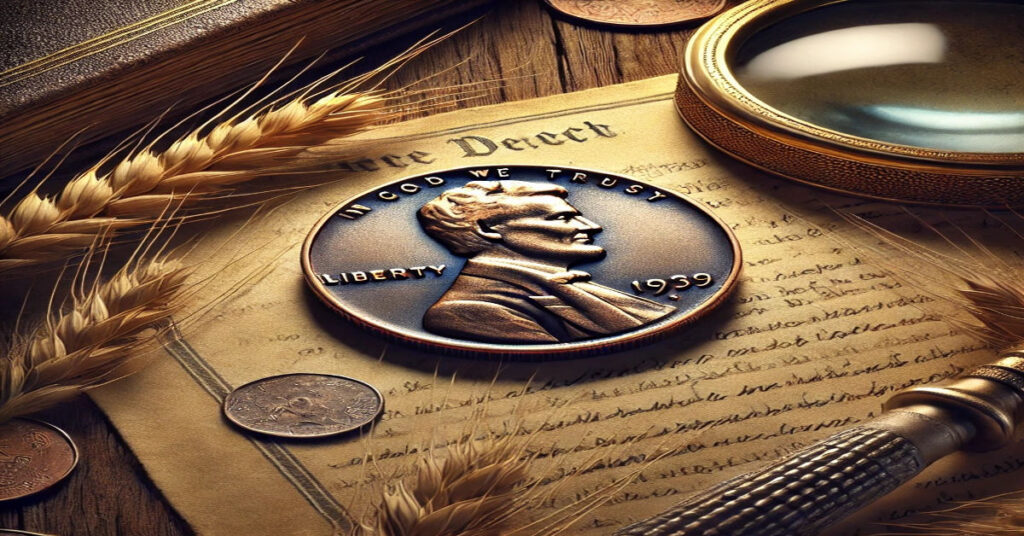The Wheat Penny also known as the Lincoln Wheat Cent or “Wheatie” holds a special place in the hearts of coin collectors and history enthusiasts. Introduced in 1909, the Wheat Penny was the first U.S. coin to feature a real person—President Abraham Lincoln—marking a shift in American coinage design. Beyond its historical significance, this coin has become a coveted collectible, with certain rare varieties fetching high values in the market.
In this article, we delve into the fascinating world of Wheat Pennies, exploring their history, design, value and tips for collectors.
The History of the Wheat Penny
Commemorating Abraham Lincoln
The Wheat Penny was first minted in 1909 to celebrate the 100th anniversary of President Lincoln’s birth. Designed by Victor D. Brenner under the guidance of President Theodore Roosevelt, the coin symbolized progress and a deeper appreciation for America’s leaders.
Replacing the Indian Head Cent
The Wheat Penny replaced the Indian Head Cent, which had been in circulation since 1859. This transition was part of Roosevelt’s broader initiative to modernize U.S. coinage, making it more visually appealing and historically significant.
The Design of the Wheat Penny
Obverse Design
The front of the Wheat Penny features a detailed portrait of Abraham Lincoln, making it the first U.S. coin to showcase a president. Brenner’s design captures Lincoln’s contemplative expression, a nod to his leadership during one of America’s most challenging eras.
Reverse Design
The reverse side is adorned with two stylized wheat stalks framing the inscriptions “ONE CENT” and “UNITED STATES OF AMERICA.” The phrase “E PLURIBUS UNUM” appears above, emphasizing unity.
Initials Controversy
Victor D. Brenner’s initials, “V.D.B.,” appeared prominently on the 1909-S Wheat Pennies. However, this sparked controversy, leading to their removal later that year. This design variation is now one of the most sought-after by collectors.
Why Collect Wheat Pennies?
Historical Value
Owning a Wheat Penny is like holding a piece of American history. These coins reflect the cultural and artistic values of their time.
Variety and Rarity
The Wheat Penny series includes numerous varieties, such as the 1909-S VDB and the 1914-D, which are considered the “Holy Grails” of Wheat Penny collections.
Affordable Entry Point
For beginners, Wheat Pennies offer an accessible way to start a coin collection. Many circulated Wheat Pennies can be purchased at reasonable prices, making them ideal for new collectors.
Rare and Valuable Wheat Pennies
1909-S VDB
This coin is one of the rarest Wheat Pennies, produced in limited quantities before Brenner’s initials were removed. Its scarcity and historical significance make it highly valuable.
1914-D
The Denver Mint produced only a small number of Wheat Pennies in 1914, making the 1914-D another prized collectible.
1922 No D
A minting error resulted in some 1922 Wheat Pennies being produced without the “D” mintmark. This error variety is highly sought after by collectors.
1943 Steel Cent
During World War II, copper was redirected for war efforts, and Wheat Pennies were minted from steel. These unique coins are both collectible and affordable.
How to Determine the Value of a Wheat Penny
Condition (Grade)
A coin’s condition plays a significant role in determining its value. Coins are graded on a scale from Poor (P) to Mint State (MS). Mint State coins, which are uncirculated and retain their original luster, are the most valuable.
Rarity
Rare coins, especially those with limited mintage or unique errors, fetch higher prices in the market.
Demand
Collector interest also influences a coin’s value. Wheat Pennies with historical significance or unique design elements are often in high demand.
Tips for Collecting Wheat Pennies
Start Small
Begin by collecting common Wheat Pennies found in circulation or at local coin shops. These are affordable and provide a great introduction to coin collecting.
Learn to Grade Coins
Familiarize yourself with grading standards to evaluate the condition of your coins accurately.
Use a Coin Album
Organize your collection in a dedicated coin album to protect your Wheat Pennies and showcase them attractively.
Research Rare Varieties
Educate yourself about rare Wheat Pennies and their distinguishing features. This knowledge can help you identify valuable coins.
Buy from Reputable Sources
When purchasing rare or high-value Wheat Pennies, always buy from trusted dealers or auction houses to avoid counterfeits.
Fun Facts About Wheat Pennies
- Longest-Running Design: The Wheat Penny design was in circulation from 1909 to 1958, making it one of the longest-running U.S. coin designs.
- Transition to Memorial Penny: In 1959, the Wheat Penny was replaced by the Lincoln Memorial Penny to commemorate Lincoln’s 150th birthday.
- Copper vs. Steel: During World War II, the composition of Wheat Pennies changed from copper to steel to conserve resources.
The Legacy of the Wheat Penny
The Wheat Penny remains a cornerstone of American coin collecting. Its historical significance, coupled with its variety and accessibility, ensures its enduring popularity. Whether you’re a seasoned numismatist or a casual enthusiast, the Wheat Penny offers a fascinating glimpse into the artistry and history of U.S. coinage.
Conclusion
The Wheat Penny is more than just a coin—it’s a symbol of American heritage and a collector’s delight. With its rich history, unique design, and countless varieties, the Wheat Penny continues to captivate generations of coin enthusiasts. Whether you’re starting a collection or seeking rare treasures, this iconic coin offers something for everyone.
FAQs
1. What is a Wheat Penny?
A Wheat Penny is a U.S. cent minted between 1909 and 1958, featuring a portrait of Abraham Lincoln and wheat stalks on the reverse.
2. Are Wheat Pennies valuable?
Yes, certain rare varieties like the 1909-S VDB and 1914-D are highly valuable, especially in good condition.
3. What is the rarest Wheat Penny?
The 1909-S VDB is one of the rarest and most sought-after Wheat Pennies.
4. How do I start collecting Wheat Pennies?
Begin by looking for common Wheat Pennies in circulation or purchasing affordable ones from coin shops.
5. What is the significance of the 1943 Steel Cent?
It was minted during World War II using steel instead of copper, making it a unique and collectible Wheat Penny.
6. Where can I buy Wheat Pennies?
You can purchase them from coin dealers, online auctions, and collector shows.







